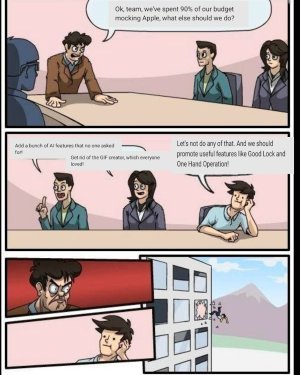Google announces Chromebook Pixel: a premium Chrome OS laptop shipping next week for $1,299
When Google unveiled the very first Chrome OS laptop, the vision was clear: Eric Schmidt told us that Chromebooks would be cheap, disposable products that you could easily replace at will. Today, however, the company's taking a different tack. This is the Chromebook Pixel, the first Chromebook designed by Google itself, and it's unmistakably a premium product. It also just so happens to aiming directly at Apple's MacBook Pro with Retina Display.
Like Apple's notebook, the highlight is the Gorilla Glass-covered screen: with a 12.85-inch, 2560 x 1700 touchscreen panel, Google says it's the highest resolution display that's ever shipped on a laptop. "You'll never ever see another pixel in your life," says Chrome VP Sundar Pichai. And yet this particular screen has a 3:2 aspect ratio: In order to better fit web content, which often flows vertically down a page, the screen is nearly as tall as it is wide.
While it's a hair thicker than the MacBook Air, it shares many of the design elements that Apple popularized there, too: invisible speakers that fire upwards, through the keyboard, vents hidden in the hinge, and a very thin yet responsive LED-backlit keyboard, custom-made for the machine.
But Google's also clearly trying to improve upon Apple machines, touting rounded edges that don't dig into your wrists, and a third dedicated microphone to cancel out keyboard noise during VoIP calls and video chats. Notably, there's also an etched glass touchpad far finer than the competition. "We experimented with different surface textures under a microscope till we came up with these peaks and valleys that feel really nice under your fingers," said a representative. Google made a big deal about the hinge, too: you can lift the lid without lifting the front of the laptop off the ground. "You get the feel of a luxury car door opening and closing," says Pichai.
And then there's the touchscreen. Google repeatedly told us how smooth and fluid it is to swipe through webpages on the touchscreen on the Pixel, and how it would enable developers to target a broader ecosystem for their apps by allowing their tablet and smartphone creations to have the same experience on the web. If only it were true: the touchscreen response is far from fluid, if Google's on-stage demos and our own hands-on impressions are any indication.
For the first time in a Chromebook, specs have been improved: with a Core i5 processor — rather than an ARM or Intel Atom chip — as well Intel HD 4000 graphics and 4GB of RAM, this Chromebook should have a similar amount of performance to existing Windows ultrabooks. Google says it can play multiple 1080p videos simultaneously. Unfortunately, that processing power and the high-res screen means lower battery life: the company quotes a five- hour runtime. Like other Chromebooks, the Pixel still has a fairly sparse array of ports, with two USB 2.0 jacks, a Mini DisplayPort, a combo 3.5mm headset jack, and an SD card slot. There's dual-band 802.11 a/b/g/n Wi-Fi, Bluetooth 3.0, and a 720p webcam flanked by dual microphones up top.
While it admittedly doesn't have the same software ecosystem as a Windows ultrabook, Google says developers are on board, showing a new UI for photography website 500px, and a version of Quickoffice that will let you open Word and Excel documents natively in a web browser. The company also demoed a new Google+ app that should arrive in a few weeks: it allows Chromebooks to take photos right off an SD card and upload them directly to Google Drive.
Google will ship two versions of the Pixel, one with Wi-Fi only and one with an integrated Verizon LTE modem. You'll be able to purchase a unlimited day pass, or add the Pixel to a existing Verizon shared data plan for $10 a month.
The Wi-Fi model will come with 32GB of storage, and is on sale today for $1,299 in the United States and £1,049 in the UK. It will ship next week. The LTE model will have 64GB of storage for $1,449 in early April. Google's also including a full 1TB of Google Drive storage, per user, for three years, in the Chromebook Pixel's price.
Like we wrote in the beginning, the Chromebook Pixel is clearly a premium laptop, but that's also an incredibly steep price for a device that primarily runs just the web and web applications on a relatively new OS... particularly when it also has a screen with an unfamiliar resolution and aspect ratio that developers will need to target. When you can get a similarly premium laptop that does far more in the 13-inch MacBook Pro with Retina Display for $1,499, it could be a hard sell.
Chrome boss Sundar Pichai defended the laptop's unique screen as a bet on the future. "Everyone needs to accomodate to high-res screens and touch... we have an opinion on that and are putting it out there."
Why so expensive, though? "For a user who lives in the cloud, what is the best computing experience we can design?" That's the question Pichai says the Pixel team asked of itself. "We want to provide an option for those who demand premium hardware, those who are writing the next generation of applications," he said.
"I think people want to live in this world."








![Alien 0] 0]](/styles/default/xenforo/NTemojis/alien.gif)


































